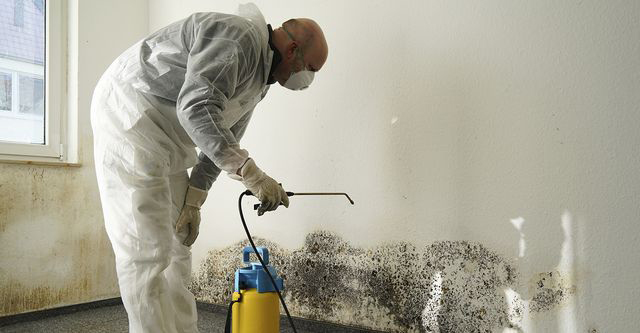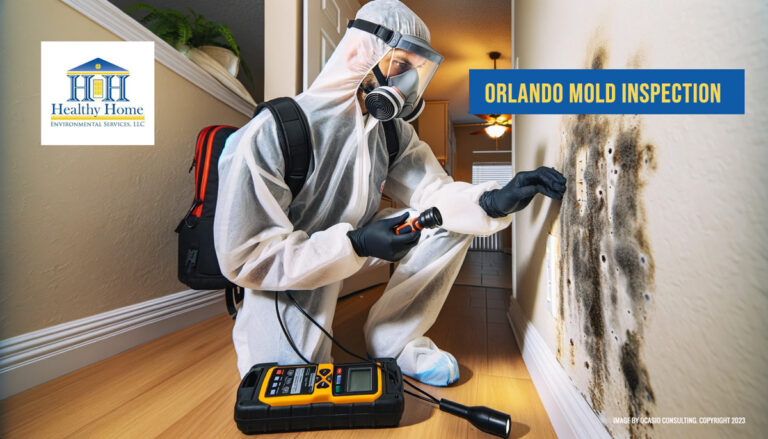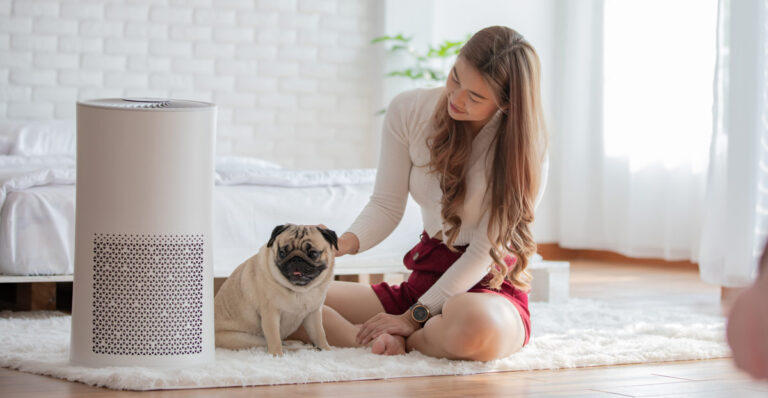How to Remove Mold from Painted Walls: A Step-by-Step Guide
Mold on interior painted walls is a common problem that can happen when moisture builds up in your home. If left unchecked, mold can spread damage to your walls, and pose health hazards. Removing mold properly is crucial for all homeowners.
This comprehensive guide will walk you through how to remove mold from painted walls, from initial mold inspection to remediation and prevention.
What Causes Mold on Painted Walls
Mold needs moisture to grow. Some common ways moisture gets introduced into your home leading to mold on walls:
- Water leaks from roofs, windows, doors, or plumbing
- Flooding or heavy rain
- High humidity
- Condensation buildup
- Sprinkler spray hitting the house
This excess moisture enables mold spores already in the air to germinate and spread on your walls and painted surfaces.
Some common places to find mold on walls:
- Near leaking pipes or areas with water spills
- Below windows with condensation issues
- In bathrooms with humid conditions
- Near roof leaks
- On exterior walls with drainage issues
Once mold takes hold, it can spread rapidly across adjacent surfaces. Contact a local mold inspection company if you feel the situation is out of hand.
Dangers of Mold on Walls
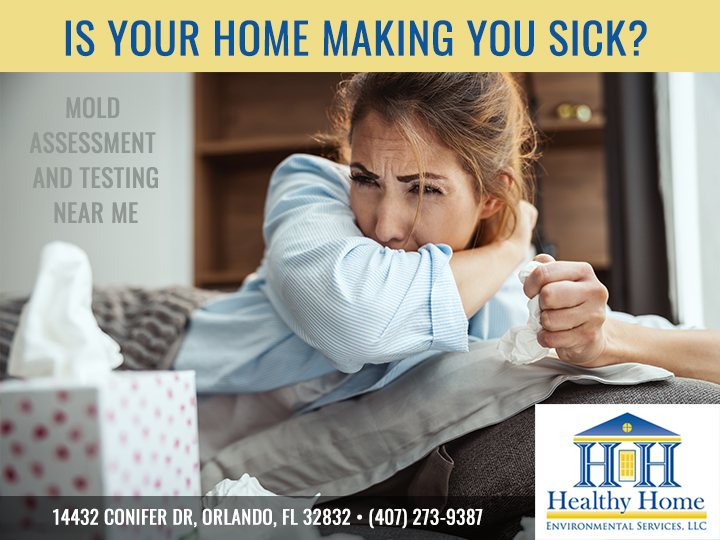
Don’t ignore mold on your painted walls. Mold can pose health risks and damage your home over time.
Health Risks
Inhaling or touching mold spores can cause allergic reactions and respiratory issues like:
- Congestion, runny nose
- Coughing, wheezing
- Irritated eyes
- Skin irritation
Mold exposure is especially hazardous for infants, children, the elderly, and those with compromised immune systems or mold allergies.
Some toxic black molds like Stachybotrys can cause severe symptoms and illnesses.
Property Damage
If left unchecked, mold can spread across wall surfaces and into drywall or wood over time, requiring expensive repairs.
Moisture from mold can warp, degrade, and discolor paint, wallboards, and framing. Mold also produces musty odors that can permeate drywall and interior furnishings.
Detecting Mold on Painted Walls
Finding mold early is key to simpler and less extensive remediation.
Signs of mold on painted walls:
- Visible fuzzy or black growth
- White, green, brown or gray discoloration
- Peeling or bubbling paint
- Musty, earthy smell
- Damp areas on walls
- Walls feeling spongy when pressed
Inspect regularly for early signs, especially in damp areas prone to mold like below windows, near showers or behind furniture against exterior walls.
How to Remove Mold from Painted Walls
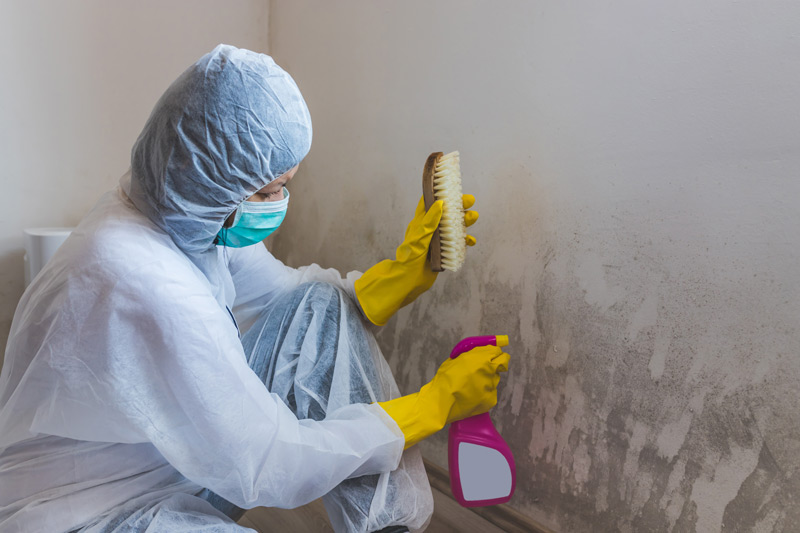
Once mold is detected, act quickly to clean and remove it. Here are the key steps involved:
1. Gear Up
Gather the right safety gear and supplies:
- N95 respirator mask
- Goggles
- Disposable gloves
- A bucket or basin
- Medium and heavy grit sandpaper
- Mold-killing detergent or solution
- Clean rags
- Plastic sheets
- HEPA vacuum
2. Suit Up
Wear protective gear to avoid inhaling mold spores or touching mold:
- Respirator mask
- Goggles
- Gloves
3. Assess and Contain
Check how far the mold has spread. Isolate the affected area to contain spores.
- Close doors and use plastic sheets to cover vents or doorways.
- Turn off HVAC systems servicing the area.
This stops mold spores from circulating further.
4. Remove Loose Mold
Carefully remove any loose surface mold:
- Use a HEPA vacuum on walls and crevices.
- Wipe off visible mold gently with a damp cloth.
- Discard or seal cloth in a plastic bag immediately.
This clears some mold before deeper cleaning.
5. Mix Cleaning Solution
Mix a mold killing cleaning solution. Simple options include:
- 1 cup bleach per gallon of water
- Vinegar and water mixture
- Commercial mold cleaner
Check the product label for proper mixing.
6. Clean Surfaces
Scrub the affected walls thoroughly using the cleaning solution:
- Use a sponge or cloth dipped in the solution.
- Start from the top and work down methodically.
- Rinse with clean water.
- Dry quickly with fans.
Repeat cleaning if needed on stubborn mold.
7. Sand and Vacuum
If mold persists after cleaning, sand and vacuum:
- Lightly sand areas of remaining mold or staining.
- Use medium grit sandpaper first, then fine grit.
- Vacuum up all sanding residue with a HEPA vacuum.
This removes any surface mold roots.
8. Dispose and Dry
Properly dispose of all moldy materials and dry areas:
- Discard used cloths, sandpaper, plastic sheets.
- Dry areas quickly using dehumidifiers or fans.
- Keep windows open for air circulation.
Removing all moisture prevents recurrence.
9. Repaint and Seal
Repaint cleaned walls with mold-resistant paint. Use primer and sealants on stubborn areas.
Mold resistant paints contain fungicides that inhibit mold growth. Use a high-quality interior latex paint.
For glossy or oil-based paint, lightly sand before repainting to help new paint adhere.
10. Monitor and Maintain
Check the affected area periodically for any recurring mold. Maintain low indoor humidity levels.
Fix any moisture sources like leaks or condensation promptly. Report mold growth early before major spread.
This preventative care helps avoid a mold resurgence.
Tips for Mold Remediation
Follow these best practices when cleaning and removing mold for optimal results:
- Always test clean a small discreet area first to check if solutions or methods damage paint or surfaces.
- Use commercial mold killing detergents for tough mold cases. Vinegar or bleach alone may not suffice.
- Apply cleaning solutions liberally on moldy areas and let sit before scrubbing for full effect.
- Dry walls quickly using portable fans to eliminate residual moisture.
- Consider replacing porous drywall or substrate if mold damage is severe. Mold roots may persist behind walls.
- Hire a professional mold remediation contractor for large affected areas or mold growing into drywall or framing.
- Check attics, basements and crawl spaces for any hidden mold problems.
- Prevent cross contamination by isolating work areas. Discard contaminated PPE.
- Use negative air machines and HEPA filtration to trap spores during remediation.
With the right process and safety steps, you can effectively remove mold growth from painted walls and prevent future occurrences.
Conclusion
Mold growth on interior painted walls is a problematic but treatable issue. With the proper safety precautions and cleaning methods, you can effectively remove mold from painted walls and prevent regrowth.
Controlling indoor humidity, fixing plumbing promptly and maintaining painted surfaces are key to keeping walls mold-free. When caught early, mild mold can be managed with thorough cleaning, drying, sanding and repainting. Severe cases may require drywall replacement.
Implementing this comprehensive guide will allow you to eliminate hazardous mold from painted walls, avoid damage and keep your home’s interior surfaces looking their best. With vigilance and care, mold doesn’t stand a chance on your watch.
FAQs About Removing Mold on Painted Walls
Can I just paint over mold on walls?
Painting over visible mold without removal is not advised. The mold will continue growing under the new paint. Always thoroughly clean and dry affected areas before repainting walls.
What kills mold instantly?
No mold killer can instantly remove mold entirely. However, bleach solutions, hydrogen peroxide, vinegar, ammonia, or commercial mold cleaners containing chlorine are effective at killing active mold after some contact time.
Does white vinegar remove mold?
White vinegar is a natural mild acid that can help clean and slightly disolve mold on non-porous surfaces like tile or metal. It may not be as effective on porous painted walls compared to stronger bleach solutions. Test vinegar first.
How long does it take for mold to grow on walls?
Given the right humid conditions, mold spores can germinate and grow visible fuzzy colonies on wall paint in as little as 48-72 hours. Slow leaks or condensation can feed gradual mold growth over weeks or months.
Does mold come back after removing it?
Mold can recur if any remnants remain or moisture levels are not controlled. Thorough cleaning, drying, sealing and painting treated areas helps prevent recurrence. Maintaining proper humidity and fixing leaks also keeps mold at bay.
Can you completely remove mold from drywall?
For drywall with heavy mold damage behind the paper surface, complete mold removal is difficult. The porous gypsum core of drywall can harbor mold even after cleaning the surface. Replacing affected drywall is recommended in severe cases.




